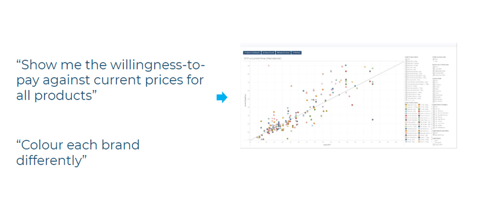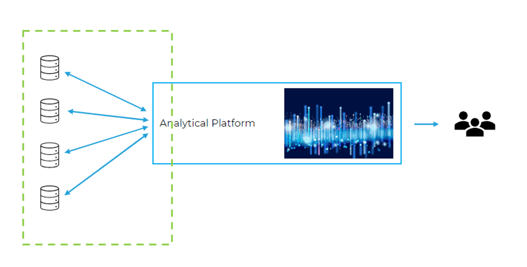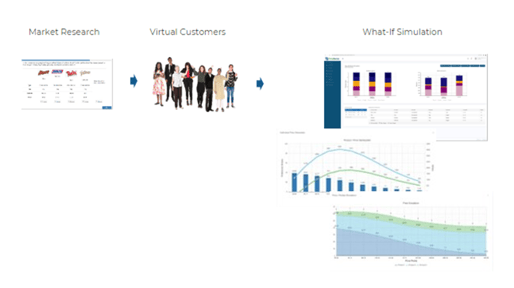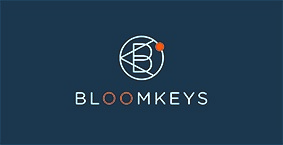Leveraging Technology in RGM: Using Data-Driven Insights to Optimize your Revenue Growth
 PriceBeam
·
4 minute read
PriceBeam
·
4 minute read
.png?width=727&height=242&name=Email%20banners%20%20(9).png)
Introduction
The business world is constantly changing, and technology has started a new chapter in how companies grow their sales and profits, especially in Revenue Growth Management (RGM). RGM aims to boost sales and profits, and technology helps make this goal more reachable and manageable.
This article walks you through how important technology is in RGM, from doing market research to figuring out what customers are willing to pay. We'll see how using the latest tech can make a big difference in a company's earnings. In our world where data rules, technology and data analysis play a huge part in RGM. Moving away from guesswork and toward decisions based on solid data is a big change for businesses looking to grow. With the right tech tools, you can have access to the insights that help you set smarter prices and make better business choices.
What do we mean by technology in RGM?
When we talk about technology in the realm of RGM, we're referring to the tools and softwares that provide deep insights into market trends and consumer behaviors. Market research, at its core, involves gathering and analyzing data to understand what drives consumer decisions. This is where studies on consumer willingness to pay come into play, offering a window into the value that consumers place on products or services.
Technology's role in RGM
Technology revolutionizes Revenue Growth Management by enhancing accuracy, efficiency, and strategic insight. Below are some key technologies and their applications in RGM:
- Artificial Intelligence (AI): Enables advanced price modeling and data analysis to predict pricing impacts on sales, forming the basis for strategic pricing.
- Machine Learning (ML): As AI's subset, ML enhances pricing accuracy over time through learning from data, making models more aligned with market realities.
- Deep Learning: A type of ML that detects subtle pricing patterns using neural networks, refining pricing strategies further.
Let's apply this to Pricing and Revenue Growth
In the realm of Pricing and Revenue Growth, the application of Artificial Intelligence (AI) is transforming how businesses approach their strategies for setting prices and enhancing profitability. AI models predict pricing strategy outcomes, optimizing prices in real-time, while AI in user interfaces and data management simplifies real-time adjustments and ensures decisions are data-driven. Furthermore, AI automates consumer feedback collection, offering deep insights into customer preferences. This comprehensive use of AI facilitates a more informed and dynamic approach to pricing, streamlining the path to increased revenue.
- AI for Price Modelling: AI algorithms can simulate and predict the outcomes of different pricing strategies, helping companies set prices that maximize revenue without deterring customers.
- AI for User Interface: Enhances the accessibility and usability of pricing tools, making it easier for businesses to adjust and optimize their pricing strategies in real-time.

- AI for Data Management: Streamlines the collection, organization, and analysis of large data sets, ensuring that pricing decisions are based on the latest and most comprehensive market information.

- AI for Taking Surveys: Automates the process of gathering consumer feedback, providing insights into willingness to pay and value perception of products or services.
When to use technology in pricing & when not to?
Deciding when to use technology for setting prices can be tricky, and knowing when to use technology and when to go old-school can help businesses set smarter prices and do better in the long run.
This overview looks at the right times to use tech tools, like AI for analyzing data and setting the best prices, especially when things in the market are moving fast. But, it also points out when it's better to stick to traditional methods, such as in situations where knowing the local market or keeping personal connections is more important than what the data says.
Useful for:
- Modelling of Historical Behaviour: AI can analyze past consumer behaviour to forecast future trends.
- Enhancement of Consumer Models: Improves the accuracy of models predicting consumer responses to pricing changes.
- Simulation of Portfolio Effects: Allows companies to see how changes in one product's price affect the sales of other products.
- Predict Total Market Outcomes: AI can simulate how overall market dynamics might shift in response to various pricing strategies.
The below image shows a simulation scenario:

Not useful for:
- Changes in consumer patterns that AI has not previously encountered.
- Recruiting new consumers where historical data is not available.
- Deeply understanding diverse consumer segments without sufficient data.
Practical Applications of PriceBeam's Tech
In the fast-paced world of business, figuring out the right price for your products and finding ways to grow your revenue can be really tricky. That’s where PriceBeam's technology comes in, it's a smart, AI-driven tool that helps businesses understand what customers are willing to pay, how to stand out from competitors, and the best strategies for things like promotions or launching new products.
With this technology, you get insights into real market trends and customer preferences, making it easier to decide how much to charge for your products or services. Whether you're trying to find the perfect price for a new item or see if you can charge more based on what people love about your products, our research, like the Willingness-to-pay studies, gives you the lowdown quickly and clearly. Plus studies on choices like Menu-Based Conjoint offer extra help in making sure your pricing strategies hit the mark for revenue growth.
Also, RGM studies provide businesses with a comprehensive approach to revenue growth, combining strategic analysis, promotional optimization, and insights from RGM Ultra for effective pricing and product positioning. Leveraging RGM studies provides businesses with several key benefits.
Below are some examples of PriceBeam’s studies:
- RGM Study: This study helps businesses optimize earnings and growth by examining pricing, promotions, and product mix against market trends and customer preferences. It offers actionable insights for informed decision-making on strategic pricing and marketing efforts to maximize revenue.
- RGM Promotion: Merging Promotion Lab and Comparative Willingness to Pay insights, this study focuses on fine-tuning promotion and pricing strategies. It analyzes the impact of various promotional offers and pricing adjustments on market positioning and revenue enhancement.
- RGM Ultra: RGM Ultra combines insights from Promotion Lab, Comparative Willingness to Pay, and Value Attributes to provide a deep dive into promotional effectiveness, product pricing, and consumer value perception, helping businesses align their strategies with market demand and consumer preferences.
Conclusion
To conclude, it's clear that bringing in AI-powered insights is more than an improvement over the old ways, it's a significant leap toward making strategic, data-driven choices. The future of succeeding in the competitive business world will increasingly depend on using the latest tech to get ahead. Using technology and detailed market insights ensures you are not just reacting to what's happening in the market but are actively leading the way. By using these tools, you make yourself flexible, well-informed, and always one step ahead in how you price your products or services, making sure you grow and stay profitable in a constantly changing market.
This move towards using tech solutions like PriceBeam's isn't just about keeping up; it's about changing what it means to be successful in today's business world.
Book a demo⬇️ and learn how we can help solve your company's pricing challenges!
.png?width=400&height=100&name=PBLogoTransparent%20(1).png)




